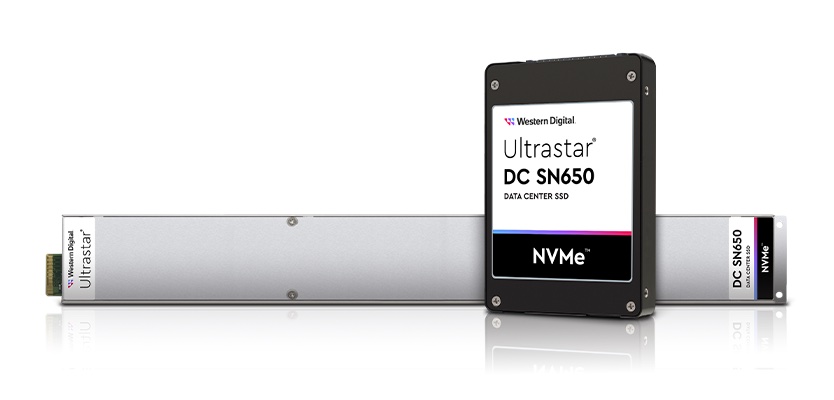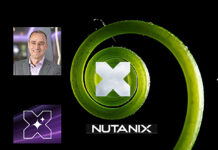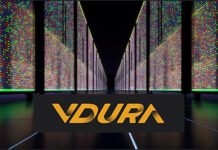Western Digital is sampling conventional 22TB and shingled 26TB 10-platter disk drives to cloud service providers with mass availability scheduled for the summer. It is also introducing SSDs using the PCIe 4 bus.
The key to WD’s new 22TB Ultrastar DC HC570 and 26TB DC H670 UltraSMR disk drives is its OptiNAND technology. This increases track density by using flash storage for faster access to track metadata and with the addition of a 10th platter inside the drive enclosure means a density of 2.2TB/platter.
The previous 20TB Ultrastar DC HC560 also had a 2.2TB/platter density, but with nine platters. This was used in Western Digital’s Red Pro NAS drive and Gold system integrator/reseller drive. All these helium-filled drives use Western Digital’s energy-assisted PM (ePMR) and triple-stage actuator (TSA) technologies.
Western Digital’s Ashley Gorakhpurwalla, EVP and GM for the HDD business unit, said: “Our intent with taking this development strategy was not only to address the capacity demands of the world’s largest cloud titans but to deliver on a roadmap that would also support the evolving economics of their data centers for decades to come. With ePMR, OptiNAND and now UltraSMR as the foundation of Western Digital’s HDD roadmap, our cloud customers can continue rapidly scaling their business by taking advantage of our innovations to lower their storage TCO.”
UltraSMR crams more write tracks on a drive by overlapping them in blocks, but not overlapping the narrower read tracks. This means read speeds on these 7,200rpm nearline drives are the same as for non-shingled drives but data rewrite speeds are slower as entire blocks need to be copied, edited with new data, and then written back to the drive. This need changes to the disk IO host system software used by the customers of such drives.
The justification for cloud customers, like Dropbox, doing this is the gaining of 18 percent more capacity than the conventional 22TB drives. They have to optimize their software stacks to take advantage of the capacity increase of SMR, and so get a lower overall total cost of ownership for data storage on these drives. Western Digital expects the 26TB capacity to serve as a tipping point to accelerate adoption of SMR drives by cloud service providers.
A second benefit of OptiNAND concerns write caches. An ArmorCache write cache data safety feature provides the performance of write cache enable (WCE) combined with the data protection of write cache disable (WCD) for added data protection and resiliency in the case of an emergency power off (EPO).
A third OptiNAND benefit is a significant performance increase in WCD mode, particularly in random writes with larger block transfers. At application data transfer lengths of 256KB or greater, IOPS and throughput improve by more than 40 percent relative to a non-OptiNAND drives, with a peak improvement of over 80 percent at 1MB transfer length.
Seagate has a 10-platter 20TB SkyHawk video surveillance drive and is sample shipping 20TB+ drives without specifying the actual capacity or the technology used. If Western Digital can point to a capacity and/or price/performance advantage over Seagate by integrating flash technology with disk drives then it has a counter to activist investor Elliott’s complaint about a lack of disk and flash synergy.
WD noted it could see a path to 30TB drives without using HAMR technology.
Western Digital flash action
Western Digital is introducing a PCIe 4 PC SN740 NVMe SSD with sequential read speeds up to 5,150MB/s in a thin, light, and low-power design. We think this is an M.2 format card in 2230, 2242, and possibly 2280 variants, using BiCS 5 (112-layer) 3D NAND in TLC format. It is, we understand, meant for PC builders.
The SN740 is accompanied by the BLACK SN850X NVMe SSD and BLACK P40 Game Drive SSD. The Black SN850 gaming SSD was announced in October 2020 and used BiCS 4 (96-layer) 3D NAND along with a PCIe 4 interface. We think the SN850X is an update on this using newer BiCS 5 (112-layer) 3D NAND and probably with the same capacity range: 500GB, 1TB, and 2TB.
WD has announced an SN650 data centre SSD with up to 15.36TB capacity and both 2.5-inch and E1.L formats. It is built with BiCS 5 (112-layer) technology in TLC (3bits/cell) format and uses the PCIe gen 4 bus and NVMe. WD says the drive increases the number of virtualized hosts per SSD, but not how. There are no performance, endurance or other capacity details. The drive is sample shipping now and production ships will start sometime in the second half of the year.

Availability
There will be 22TB DC HC570 volume shipments to the channel in the summer of 2022, along with the UltraSMR HDD starting shipping to select customers. Western Digital will add its 22TB drives to the Ultrastar Data60 and Data102 JBODs, each with 24 drive bays, in the summer as well, increasing their capacity over the current 18 and 20TB drives used.
Finally, the summer will see Western Digital introducing 22TB Purple Pro HDDs for smart video/surveillance, Red Pro HDDs for NAS products, and Gold HDDs for system integrators and resellers serving enterprises and SMBs.








